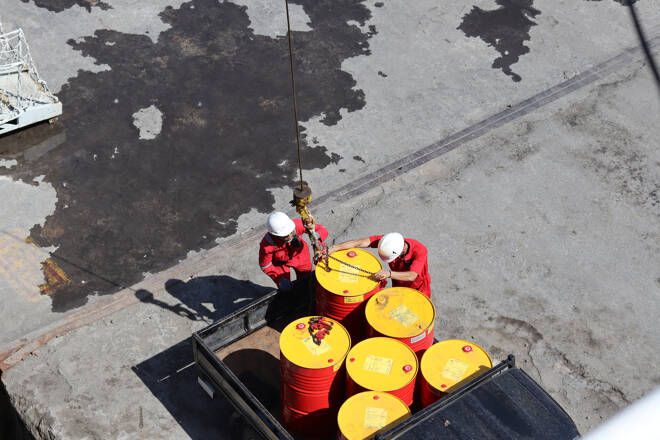Advertisement
Advertisement
Oil Price Fundamental Daily Forecast – Bearish Factors including Recession Fears Limiting Upside Potential
By:
The steep sell-off in crude oil since the major central banks started raising interest rates suggests traders are betting on a global recession.
In this article:
U.S. West Texas Intermediate and international-benchmark Brent crude oil futures are drifting lower on Thursday after another successful test of a key support area on the daily and weekly charts. Controlling the subdued price action are falling U.S. stockpiles, rising output from Russia and worries about a potential recession.
At 07:23 GMT, October WTI crude oil is trading $87.30, down $0.39 or -0.44% and December Brent is at $92.25, down $0.05 or -0.05%. On Wednesday, the United States Natural Gas Fund ETF (USO) settled at $31.89, down $0.38 or -1.18%.
The price action suggests investors are waiting for something to break the gridlock. That something may be a decision by Iran to accept or reject the new proposal on the nuclear deal.
Traders are also looking for some clarity about the supply/demand situation. The current setting is just too volatile and this is keeping many of the major players on the sidelines until conditions become more favorable for trading.
Underpinned by Strong Export Demand, US Crude, Gasoline Draws
Crude oil prices jumped higher on Wednesday after hitting a six-month low on a steeper-than-expected drawdown in U.S. crude stocks. Additionally, in a sign of strong demand, gasoline stocks drew 4.6 million barrels, much higher than the expected 1.1 million barrel draw.
More importantly, U.S. crude exports hit 5 million barrels per day, the highest on record, EIA data showed, as WTI has traded at a steep discount to Brent, making purchases of U.S. crude more attractive to foreign buyers.
Low China Demand, Increased Russia Production Capping Prices
While strong U.S. exports and domestic gasoline demand are providing a little support, worries over China demand and rising Russia production are capping gains.
China’s refining output remained sluggish in July as strict COVID-19 lockdowns and fuel controls curbed production.
Meanwhile, Russia has started to gradually increase oil production after sanctions-related curbs as Asian buyers have increased purchases, leading Moscow to raise its forecasts for output and exports until the end of 2025, and economy ministry document reviewed by Reuters showed.
Global Rate Hikes Increasing Chances of Recession
The steep sell-off in crude oil since the major central banks started raising interest rates suggests traders are betting on a global recession to drive demand destruction.
Daily Forecast
The lackluster price action this week suggests two things: traders are trying to consolidate in order to establish value while waiting for a catalyst to trigger a rally, or the bears are selling rallies, while waiting for a catalyst to drive prices through recent support.
Unfortunately, barring a surprise production cut by OPEC or Iran walking away from the nuclear deal, it’s hard to find a catalyst that could help sustain a long-term bull market.
Furthermore, it’s more likely that we’ll see a global recession which would destroy demand because the central banks aren’t likely to stop raising rates until inflation drops to acceptable levels, and that may not happen until mid-2023.
It seems more plausible that WTI will trade in the low 70s and Brent in the low 80s over the near-term.
For a look at all of today’s economic events, check out our economic calendar.
About the Author
James Hyerczykauthor
James is a Florida-based technical analyst, market researcher, educator and trader with 35+ years of experience. He is an expert in the area of patterns, price and time analysis as it applies to futures, Forex, and stocks.
Did you find this article useful?
Latest news and analysis
Advertisement
